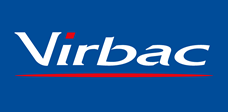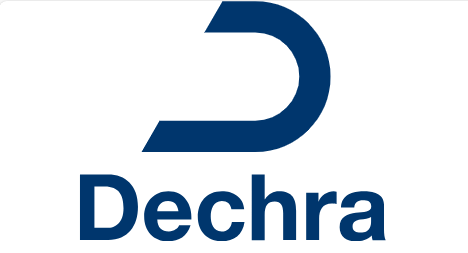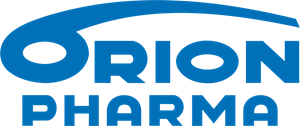Combination therapy
No results were found for your selected species
Ophtocycline
Active substance
ATC code
Species
Dogs, cats and horses.
Indications
Treatment of keratitis, conjunctivitis and blepharitis caused by Staphylococcus spp., Streptococcus spp., Proteus spp. and/or Pseudomonas spp.
Dose to be administered and administration route
Ocular use.
Horses: Apply 2-3 cm of ointment (depending on the size of the animal) in the conjunctival sac 4 times a day for 5 days. If after 3 days of treatment no clinical improvement has occurred, alternative therapy should be considered.
Dogs and cats: Apply 0.5-2 cm of ointment (depending on the size of the animal) in the conjunctival sac 4 times a day for 5 days. If after 3 days of treatment no clinical improvement has occurred, alternative therapy should be considered.
Adverse reactions
Dog, cat, horse:
|
Very rare (<1 animal / 10 000 animals treated, including isolated reports): |
Application site reaction Eye disorder (e.g. Eye irritation, Eye itching, Swollen eye, Eye redness) |
Reporting adverse events is important. It allows continuous safety monitoring of a veterinary medicinal product. Reports should be sent, preferably via a veterinarian, to either the marketing authorisation holder or its local representative or the national competent authority via the national reporting system. See the package leaflet for respective contact details.
Dispensing
POM-VEMA Categorisation
References
SUMMARY OF PRODUCT CHARACTERISTICS 1. NAME OF THE VETERINARY MEDICINAL PRODUCT
Ophtocycline 10 mg/g eye ointment for dogs, cats and horses
2. QUALITATIVE AND QUANTITATIVE COMPOSITION
Each gram contains:
Active substances:
Chlortetracycline hydrochloride 10.0 mg
(equivalent to 9.3 mg chlortetracycline)
Excipient(s):
For the full list of excipients, see section 6.1.
3. PHARMACEUTICAL FORM
Eye ointment.
Yellowish to yellow homogenous ointment
4. CLINICAL PARTICULARS
4.1 Target species
Dogs, cats and horses.
4.2 Indications for use, specifying the target species
Treatment of keratitis, conjunctivitis and blepharitis caused by Staphylococcus spp., Streptococcus spp., Proteus spp. and/or Pseudomonas spp.
4.3 Contraindications
Do not use in cases of hypersensitivity to the active substance, to other tetracyclines or to any of the excipients.
4.4 Special warnings for each target species
None.
4.5 Special precautions for use
Special precautions for use in animals
Use of the veterinary medicinal product should be based on identification and susceptibility testing of the target pathogen(s). If this is not possible, therapy should be based on epidemiological information and knowledge of susceptibility of the target pathogens at farm level, or at local/regional level.
Use of the product should be in accordance with official, national and regional antimicrobial policies.
Use of the veterinary medicinal product deviating from the instructions given in the SPC may increase the prevalence of bacteria resistant to chlortetracycline and may decrease the effectiveness of treatment with other tetracyclines due to the potential for cross-resistance.
Special precautions to be taken by the person administering the veterinary medicinal product to animals
This veterinary medicinal product may cause skin sensitisation, hypersensitivity reactions and/or eye irritation.
People with a known hypersensitivity to tetracyclines should avoid contact with the veterinary medicinal product.
Avoid contact with the skin and eyes.
Wear impermeable gloves when handling the product.
In case of contact with the skin, wash exposed skin with water and soap. If you develop symptoms following exposure such as a skin rash, seek medical advice immediately and show the package leaflet or label to the physician.
In case of contact with the eyes, wash immediately with clean water. If irritation persists, seek medical advice immediately and show the package leaflet or label to the physician. Wash hands after use.
4.6 Adverse reactions (frequency and seriousness)
Application site reactions and eye disorders like irritation, pruritus, oedema and reddening have been very rarely reported after administration of the veterinary medicinal product in isolated cases in spontaneous reports.
The frequency of adverse reactions is defined using the following convention:
- very common (more than 1 in 10 animals treated displaying adverse reaction(s))
- common (more than 1 but less than 10 animals in 100 animals treated)
- uncommon (more than 1 but less than 10 animals in 1,000 animals treated)
- rare (more than 1 but less than 10 animals in 10,000 animals treated)
- very rare (less than 1 animal in 10,000 animals treated, including isolated reports).
4.7 Use during pregnancy, lactation or lay
The safety of the veterinary medicinal product has not been established during pregnancy and lactation. Use only according to the benefit/risk assessment by the responsible veterinarian.
4.8 Interaction with other medicinal products and other forms of interaction
No data available.
4.9 Amounts to be administered and administration route
For ocular use only.
Horses: Apply 2-3 cm of ointment (depending on the size of the animal) in the conjunctival sac 4 times a day for 5 days. If after 3 days of treatment no clinical improvement has occurred, alternative therapy should be considered.
Dogs and cats: Apply 0.5-2 cm of ointment (depending on the size of the animal) in the conjunctival sac 4 times a day for 5 days. If after 3 days of treatment no clinical improvement has occurred, alternative therapy should be considered.
4.10 Overdose (symptoms, emergency procedures, antidotes), if necessary
No data available.
4.11 Withdrawal period(s)
Meat and offal: 1 day
Not authorised for use in mares producing milk for human consumption.
5. PHARMACOLOGICAL PROPERTIES
Pharmacotherapeutic group: ophthalmologicals: antibiotics ATCvet code: QS01AA02
5.1 Pharmacodynamic properties
Chlortetracycline hydrochloride is a first-generation tetracycline. It is a predominantly bacteriostatic antibiotic that inhibits bacterial protein synthesis by binding to the 30S subunit of the bacterial ribosome. Chlortetracycline has time-dependent as well as concentration-dependent effects with AUC/MIC being the main PK/PD parameter. Chlortetracycline has a broad spectrum including both aerobic and anaerobic Grampositive and Gram-negative bacteria.
Four resistance mechanisms acquired by microorganisms against tetracyclines in general have been reported: decreased accumulation of tetracyclines (decreased permeability of the bacterial cell wall and active efflux), protein protection of the bacterial ribosome, enzymatic inactivation of the antibiotic and rRNA mutations (preventing the tetracycline binding to ribosome).
Tetracycline resistance is usually acquired by means of plasmids or other mobile elements (e.g. conjugative transposons).
Resistance to tetracyclines is common and has been identified in target bacterial pathogens; however, the prevalence of resistance is likely to vary widely between different locations.
Cross-resistance among tetracyclines is common.
5.2 Pharmacokinetic particulars
Chlortetracycline is a non-lipophilic molecule. After topical administration in the eye, systemic absorption is expected to be minimal.
6. PHARMACEUTICAL PARTICULARS
6.1 List of excipients
Paraffin, light liquid
Wool fat
Paraffin, white soft
6.2 Major incompatibilities
Not applicable
6.3 Shelf life
Shelf-life of the veterinary medicinal product as packaged for sale: 2 years. Shelf-life after first opening the tube: 14 days
6.4 Special precautions for storage
Do not store above 25ºC.
6.5 Nature and composition of immediate packaging
Epoxy resin lacquered aluminium tube with a content of 5 g, with a HDPE cannula and screw cap. One tube in a cardboard box.
6.6 Special precautions for the disposal of unused veterinary medicinal product or waste materials derived from the use of such products
Any unused veterinary medicinal product or waste materials derived from such veterinary medicinal products should be disposed of in accordance with local requirements.
7. MARKETING AUTHORISATION HOLDER
Le Vet. Beheer. B.V.
Wilgenweg 7
3421 TV Oudewater
The Netherlands
8. MARKETING AUTHORISATION NUMBER
Vm 41821/4043
9. DATE OF FIRST AUTHORISATION
09 August 2017
10. DATE OF REVISION OF THE TEXT
September 2022

Approved: 08 September 2022

| Art. Nr. | 41821/4043 |
|---|---|
| EAN | 8717973569411 |
 TRUSTED SOURCE
TRUSTED SOURCE








